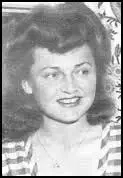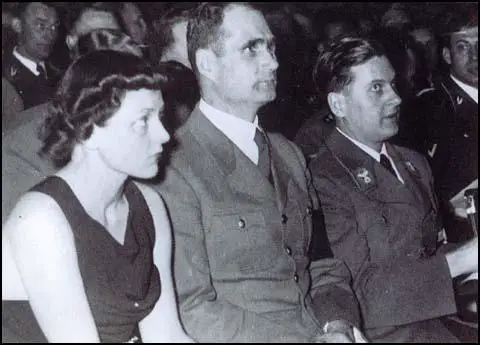Henriette Hoffmann (Henriette von Schirach)

Henriette (Henny) Hoffmann, the eldest child of daughter of Heinrich Hoffmann, a photographer, and Therese Baumann, an actress, was born on 3rd February, 1913. During the First World War her father was an official photographer for the German Army. His first book of photographs were published in 1919.
Heinrich Hoffmann, known for his anti-Semitic views, joined the National Socialist German Workers Party (NSDAP) in 1920. He soon became a close friend of Adolf Hitler and served as the party's official photographer. Over the next few years he took over 2.5 million photographs of Hitler.
Henriette met Hitler for the first time in 1922. As he frequently visited the Hoffman family home, she got to know Hitler very well over the next few years. Henny became a close friend of Hitler's niece, Geli Raubal. Hitler told Otto Wagener: "I can sit next to young women who leave me completely cold. I feel nothing, or they actually irritate me. But a girl like the little Hoffmann or Geli (Raubal) - with them I become cheerful and bright, and if I have listened for an hour to their perhaps silly chatter - or I have only to sit next to them - then I am free of all weariness and listlessness I can go back to work refreshed." According to several sources, Hitler "made a clumsy attempt at some physical contact" with Henriette.
Henriette Hoffmann also became friends with Eva Braun, who had been given an apartment in the Reich Chancellery. However, she had to enter it through the servants' quarters. Henriette later commented: "It was furnished like a guest house, deep armchairs covered in rustic material, pots of flowers, cupboards painted with gentians, whole years' editions of film magazines. She had film stars' clothes copied, knew which star sign they were born under, and was interested in their lives." Henriette added that she often had her two dogs by her side and "was smoking fast and nervously, as she always did when she knew that Hitler was not nearby."
In 1930 Henriette Hoffmann attended the University of Munich and worked part-time as Hitler's secretary. In 1931 she met Baldur von Schirach, the former leader of the National Socialist Students' Union. The couple got married in Munich on 31st March 1932. Adolf Hitler and Ernst Roehm both acted as best men. Over the next ten years Henriette gave birth to four children: Angelika Benedicta, Klaus, Robert, and Richard.

On 1st June, 1933 Baldur von Schirach was made leader of the Hitler Youth. His main objective was to re-educate German youth in the spirit of National Socialism. As Louis L. Snyder has pointed out: "Von Schirach would permit no opposition to his plans. As early as February 1933 he had led a surprise raid of fifty boys on the office of the rival Central Committee of Youth Organizations and confiscated its records." Von Schirach wrote prayers that praised Hitler and had to be read by members of the various Nazi youth organizations before they had their meals.
In 1940 Von Schirach joined the German Army and won the Iron Cross in France. In July 1941 Hitler appointed him as the Gauleiter of Vienna. Over the next few years Von Schirach was responsible for moving Jews to Poland. On 25th July, 1942, Von Schirach made a speech defending the deportation of thousands of Jews to the ghettoes of the east as "a contribution to European culture".
Baldur von Schirach was captured by Allied troops at the end of the Second World War. At the Nuremberg War Crimes Trial Schirach that he did not know about the extermination camps. He also provided evidence that he had protested to Martin Bormann about the inhumane treatment of the Jews. Along with Albert Speer Von Schirach denounced Adolf Hitler before the tribunal. He was found guilty of war crimes and sentenced to 20 years in Spandau Prison.
On 20 July 1949 whilst Von Schirach was imprisoned, Henriette von Schirach filed for divorce. The divorce was granted a year later in July 1950. Henriette published her autobiography, The Price of Glory in 1960. She continued to campaign for the release of her former husband but he remained in prison until September 1966.
Henriette Hoffmann died at Schwabing on 27th January, 1992.
Primary Sources
(1) Ian Kershaw, Hitler 1889-1936 (1998)
Hitler's relations with women, as we have already remarked, were in some respects abnormal. He liked the company of woman, especially pretty ones, best of all young ones. He flattered them, sometimes flirted with them, called them - in his patronizing Viennese petty-bourgeois manner - "my little princess", or "my little countess". Occasionally, if the stories are to be believed, he made a clumsy attempt at some physical contact, as in the case of Helena Hanfstaengl and Henrietta Hoffmann, the daughter of his photographer.
